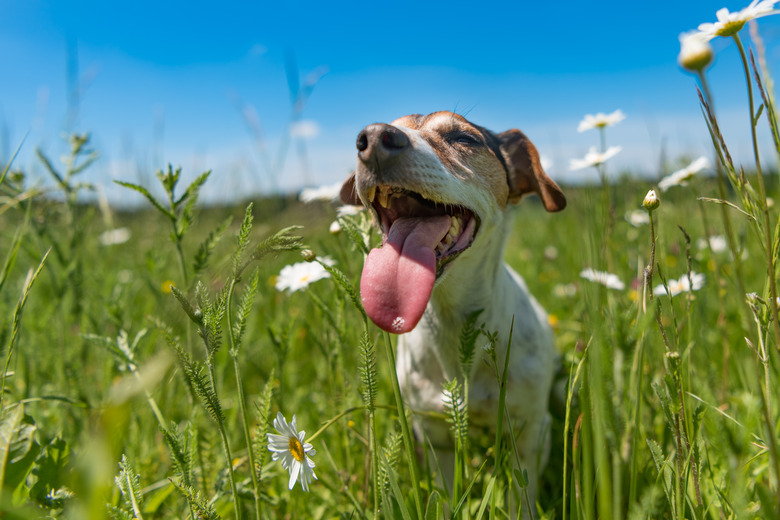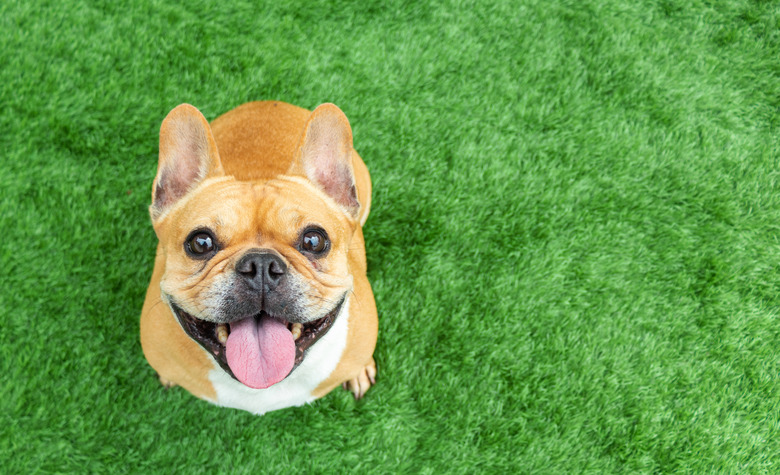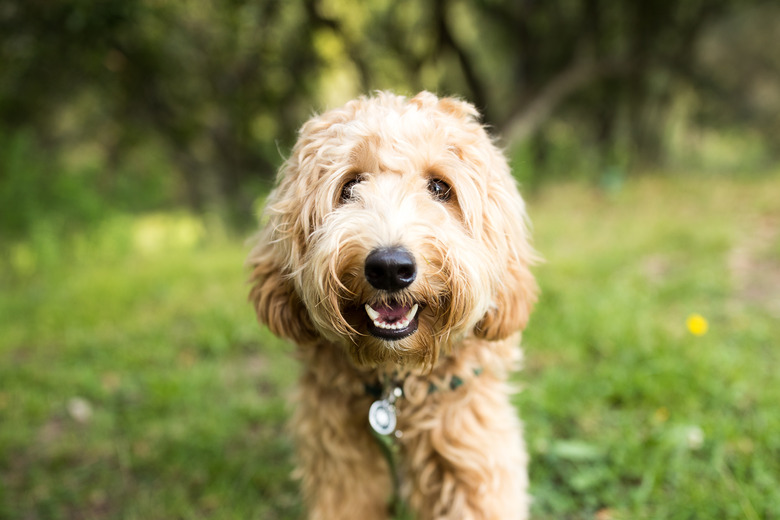Is My Dog Smiling Or Panting?
After you take your dog to the dog park or go for a vigorous walk, you notice that he's smiling. You know that those are some of his favorite activities, so it would only make sense that he's cheerful and excited afterwards.
However, just because it looks like your dog is happy, it doesn't mean that's the reality.
Learning the difference between smiling and panting, as well as deciphering your dog's body language and facial expressions, will help you when it comes to taking care of your pup and his needs.
Are smiling dogs happy?
Are smiling dogs happy?
While dogs do appear to smile from cheek to cheek when they are relaxed or excited, it doesn't always mean they are happy.
Typically, if your dog is happy, his ears will be forward or in a relaxed state, he will relax his eyes, and he'll open his mouth wide. He'll want to play with you as well. He'll go into a play bow position, where he gets down on his elbows and sticks his butt in the air, and may smile, bark, and run over to you to initiate a fun game of fetch.
If your dog's ears are pinned back, he is tucking his tail between his legs, his hair is raised, he's moving slowly, yawning, whining, licking his lips, or his body appears stiff, he may be feeling scared, stressed, and not ready to play. Even if he is smiling at the same time, he might not be happy at all.
Sometimes, dogs will smile because you're smiling, which is a form of being submissive. If your dog is relaxed, raises his paw, and/or has laid back ears, then that could show he is being submissive to you.
What dog panting looks like
What dog panting looks like
Your dog could also be "smiling" when, in fact, he's panting. If your dog is panting, he will open his mouth and eyes wide, pull back his ears tightly, stick out his tongue, and breathe heavily and quickly. He's panting to cool his body down, not because he's happy.
Dogs will pant after rigorous exercise, especially on a hot day. Older dogs, dogs with medical issues, and some brachycephalic breeds like Boston Terriers, Pugs, and Bulldogs will pant more than others.
Panting is a normal behavior, but if your dog is panting excessively, he may be experiencing heatstroke, which can lead to irreparable damage to his nervous system, heart, brain, and liver. If you can recognize when your dog is panting excessively, then you could save his life by calling the emergency vet right away.
Treating a panting dog
Treating a panting dog
If your pup is panting because it's hot outside, then move him indoors to a cooler area. Make sure he has access to cool and clean water as well. Lower his body temperature by putting towels that have been soaked in cool—not cold—water on him. If this doesn't help, take him to the veterinarian immediately.
You can avoid excessive panting by staying indoors on very hot days, giving your dog access to water at all times, not exercising with him too much if he's older or overweight, and taking him to the vet for regular checkups to make sure he's healthy. If you take your dog out on a summer day, never leave him in the car, because it could become too hot and result in his death.
Decoding your dog’s body language
Decoding your dog's body language
It's very important that you learn how to understand your dog's body language. For instance, if you think a panting smile is a real smile, you may not know how to treat your pup for heatstroke. If your dog is giving you a submissive grin, he could be showing that he's stressed. When you try to play fetch with him, he may bite you out of fear.
If your dog is smiling but his tail is raised, it could mean that he is prepared to pounce on something. You don't want to get caught in the middle of him going after a ball, especially if he's demonstrated aggressive behaviors in the past.
Your dog could also be snarling instead of smiling. While you might be able to tell the difference between a snarl and a smile, your children may not, and they could end up getting bitten. Make sure you teach your kids about doggy body language as well as supervise playtime in order to keep your canine and your kids safe.
Conclusion
Conclusion
Dogs don't necessarily smile when they are happy. In fact, they may just be panting and experiencing heatstroke. They could also be afraid, submissive, or agitated. Figuring out why your dog is smiling could help you save his life or deescalate a situation. You can do this by learning more about dog bpdy language. Then, you'll be able to ensure your puppy is happy, and actually has a positive reason to smile.


